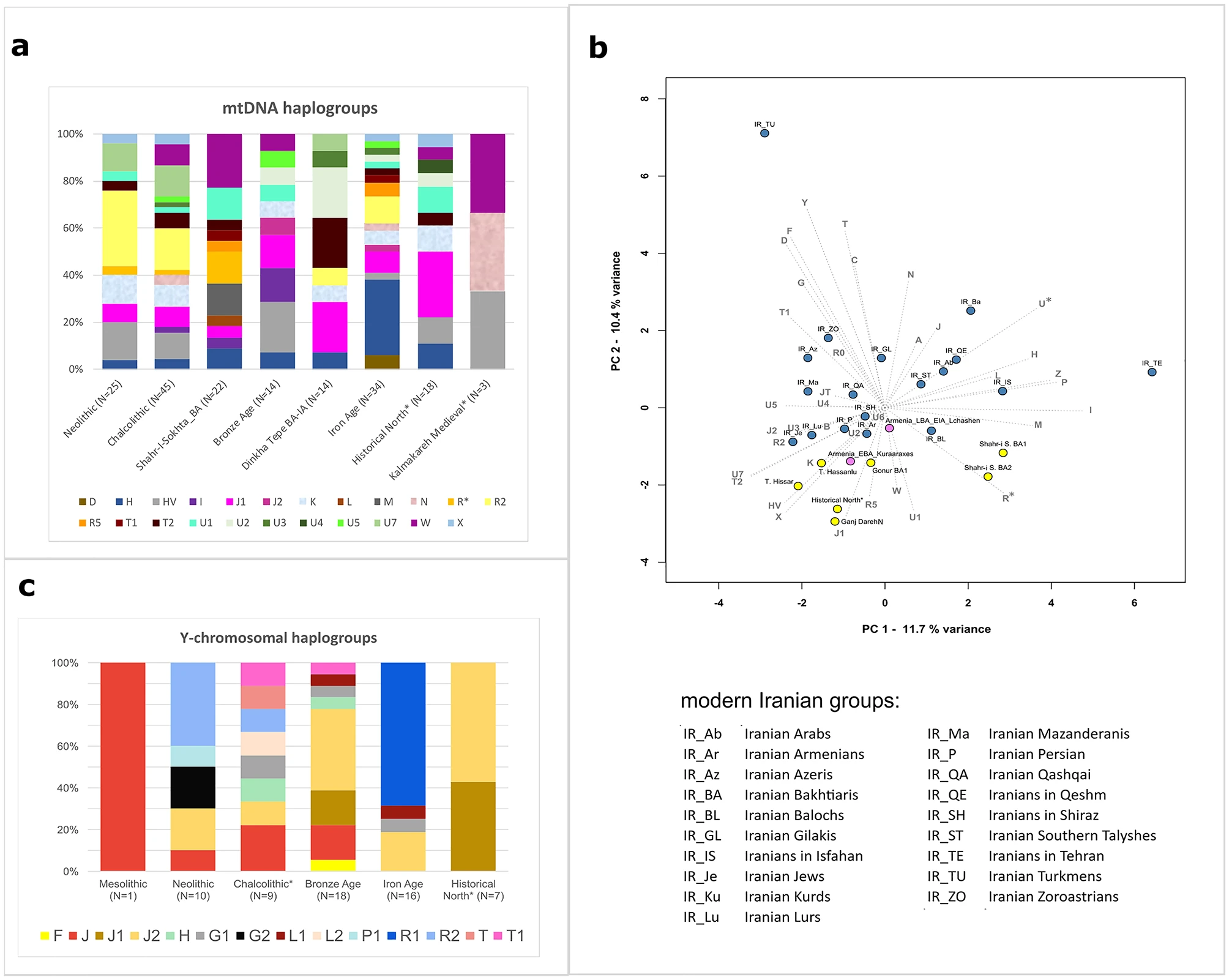from https://www.nature.com/articles/s41598-025-99743-w
Ancient DNA indicates 3,000 years of genetic continuity in the Northern Iranian Plateau, from the Copper Age to the Sassanid Empire
Shows Presence of H ydna in Chalcolithic and Bronze Age, which disappeared in Iron Age. Today only less than 1% is H in some areas of Iran.
Presence of R2 was big during Neolithic (probably due to some Neolithic areas overrepresented in the aDNA samples ) which lost steam during Chalcolithic and completely gone by the time of Bronze Age. Today R2 is mostly limited to Indian subcontinent.
Presence of L1 happened during Chalcolithic and Bronze age and extended into IA but lost completely during the IA, Now L1 is also mostly restricted to Indian Subcontinent.
The historical matches during Medieval shows mostly J1 and J2 samples dominate in Iran which caused earlier groups of people of R2 and L1 mostly moved out to Indian subcontinent

No comments:
Post a Comment